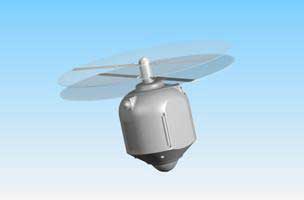Students at the Faculty of Aerospace Engineering at the Technion-Israel Institute of Technology, and Pennsylvania State University have jointly designed an advanced autonomous compact rotorcraft that could be deployed from a submarine in support of special forces operations.
For their efforts, the team recently picked up the first prize in a competition organised by the American Helicopter Society which was sponsored by Sikorsky.
The student brief required that they develop an autonomous vehicle that could be deployed from a submarine while at a periscope depth of 15 metres, rise to sea level, be able to float and take off from a rough sea, and then fly 260km, deploy/pickup two crew members and return safely to the submerged submarine.
The Technion/Penn-State vehicle, named “Waterspout”, is a one of a kind concept vehicle, capable of exiting the submarine, floating safely to the water surface, and taking off vertically to carry out its mission. The design allows the vehicle to exit through the submarine’s existing missile-silo hatch, thus preventing expensive and complex changes to the submarine’s exterior.
Instead of using a capsule to protect the rotorcraft from sea-water, the students chose to make it completely impermeable to water. Every open tube, such as the engine intake/exhaust, were fitted with seals designed by the students.

While the Technion students planned the rotorcraft’s mechanical deck, blade-folding mechanism, submarine-helicopter interface, sealing solutions, and performed water-stability analysis, the Penn State group designed the crash-proof fuel system and the rotor blades. The two teams co-operated on the vehicle’s general concept, landing gear, exterior shape, and the entrance/egress doors.




Project to investigate hybrid approach to titanium manufacturing
What is this a hybrid of? Superplastic forming tends to be performed slowly as otherwise the behaviour is the hot creep that typifies hot...